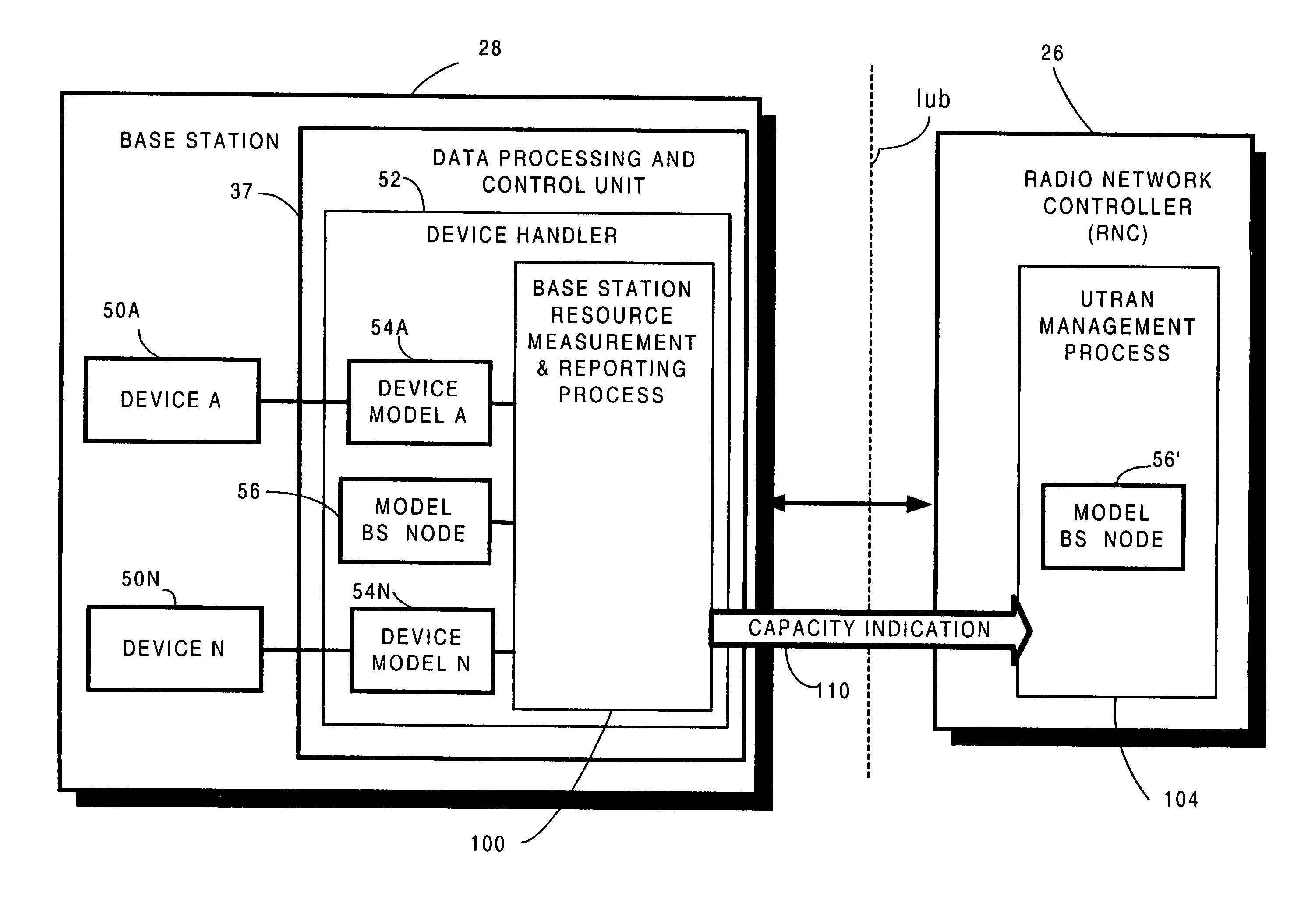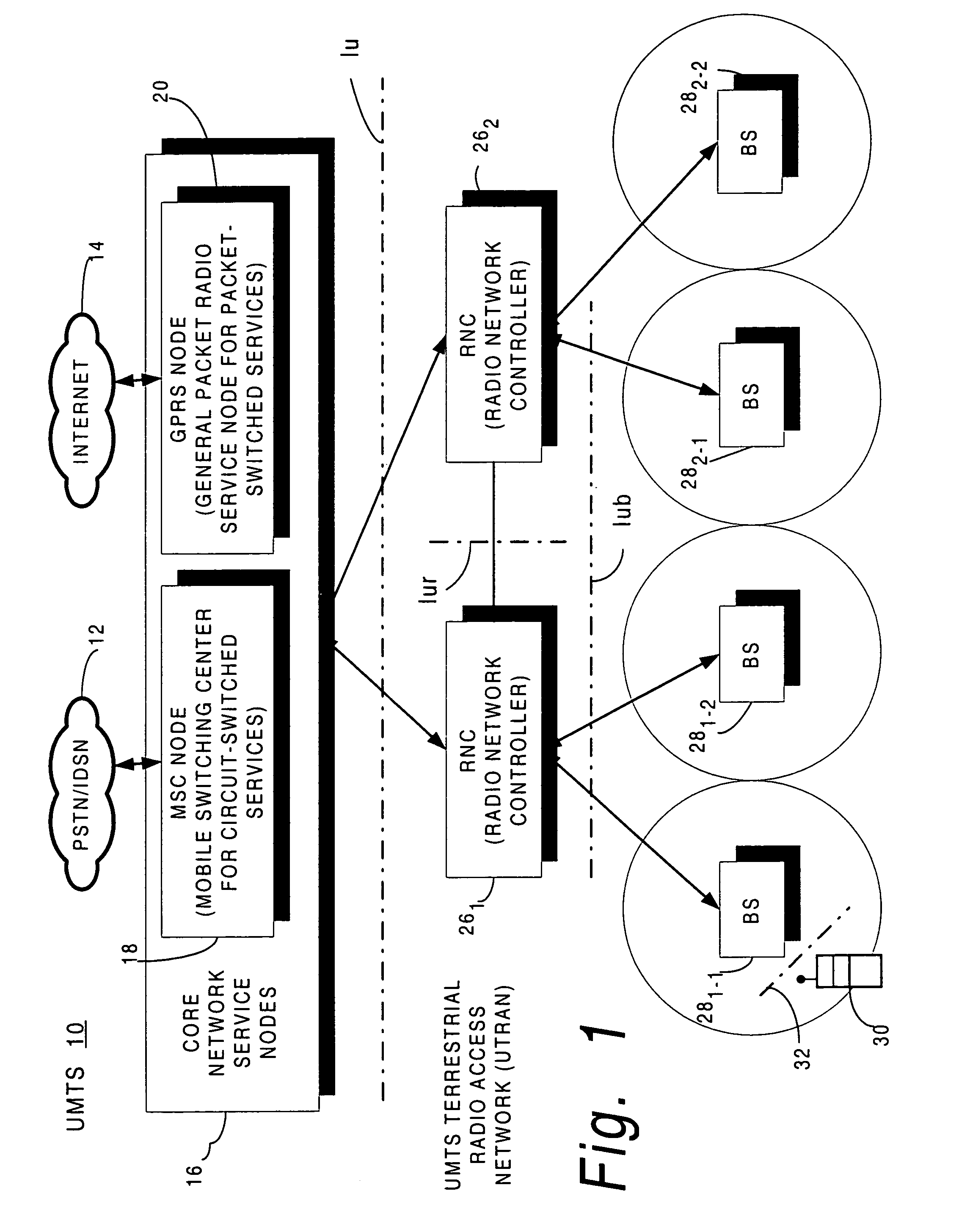Resource capacity reporting to control node of radio access network
a radio access network and resource capacity technology, applied in the field of wireless telecommunications, can solve the problems of inability to communicate continuously the exact load situation of a given base station to its controlling rnc, communication of such extensive load information would undersireably congest the iub interface, and misleading sums, etc., to achieve accurate indication of the potential additional capacity of the base station node.
- Summary
- Abstract
- Description
- Claims
- Application Information
AI Technical Summary
Problems solved by technology
Method used
Image
Examples
Embodiment Construction
[0037]In the following description, for purposes of explanation and not limitation, specific details are set forth such as particular architectures, interfaces, techniques, etc. in order to provide a thorough understanding of the present invention. However, it will be apparent to those skilled in the art that the present invention may be practiced in other embodiments that depart from these specific details. In other instances, detailed descriptions of well-known devices, circuits, and methods are omitted so as not to obscure the description of the present invention with unnecessary detail.
[0038]The present invention is described in the non-limiting, example context of a universal mobile telecommunications (UMTS) 10 shown in FIG. 1. A representative, connection-oriented, external core network, shown as a cloud 12 may be for example the Public Switched Telephone Network (PSTN) and / or the Integrated Services Digital Network (ISDN). A representative, connectionless-oriented external co...
PUM
 Login to View More
Login to View More Abstract
Description
Claims
Application Information
 Login to View More
Login to View More - R&D
- Intellectual Property
- Life Sciences
- Materials
- Tech Scout
- Unparalleled Data Quality
- Higher Quality Content
- 60% Fewer Hallucinations
Browse by: Latest US Patents, China's latest patents, Technical Efficacy Thesaurus, Application Domain, Technology Topic, Popular Technical Reports.
© 2025 PatSnap. All rights reserved.Legal|Privacy policy|Modern Slavery Act Transparency Statement|Sitemap|About US| Contact US: help@patsnap.com



